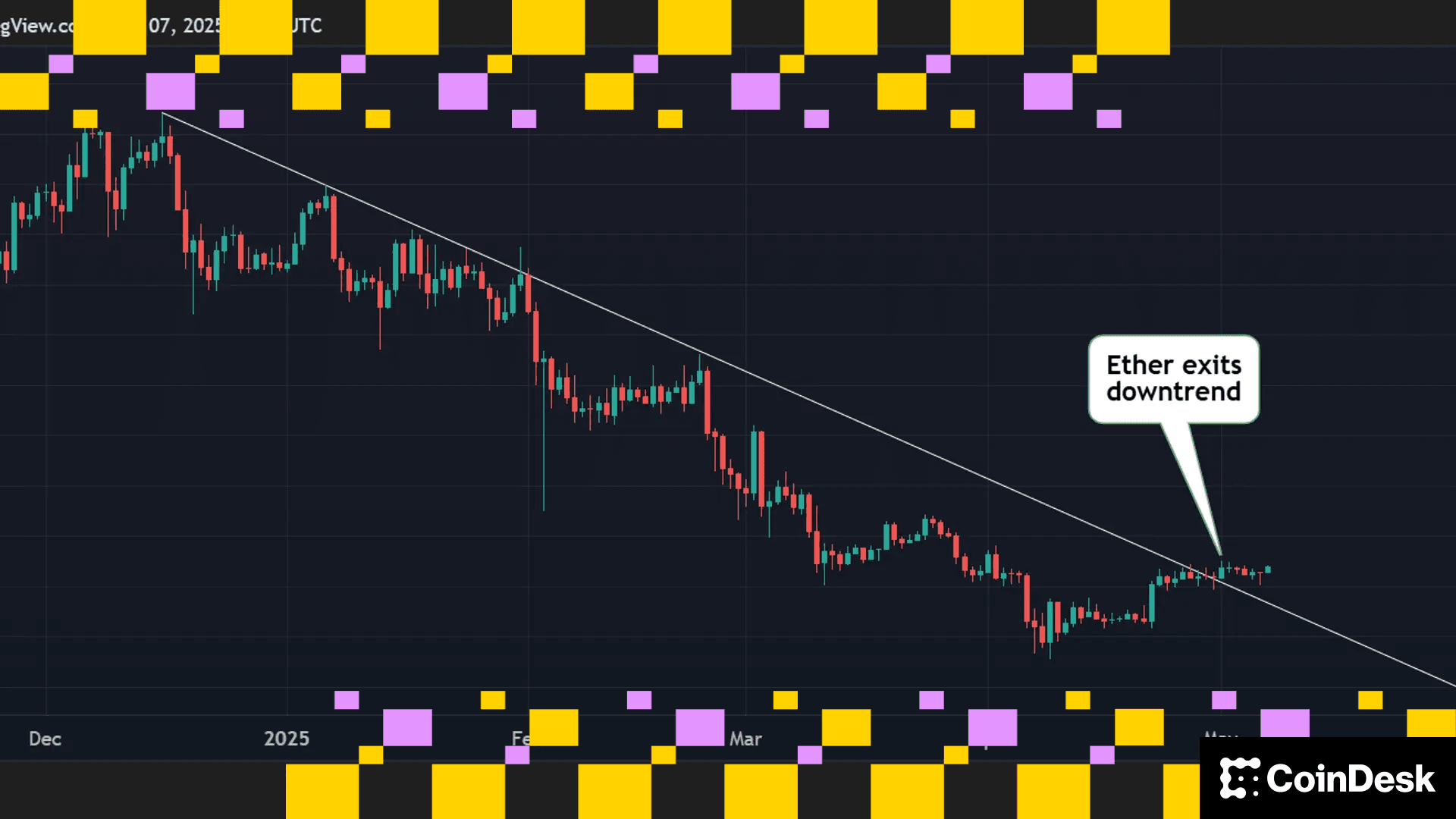Bitcoin Breaks $25K as U.S. Inflation Slowed to 6% in February
BTC rose to a nine-month high of $25,484 in the minutes following the inflation report and then extended those gains.
February inflation in the U.S. dropped to 0.4% from 0.5% in January, in line with economists' estimates, the Bureau of Labor Statistics (BLS) said Tuesday.
On a year-over-year basis, inflation slowed to 6.0% from 6.4% the month before, also in line with estimates.
The core rate of inflation – which strips out food and energy costs – increased by more than forecast to 0.5% in February versus 0.4% in January, and against forecasts for 0.4%. The year-over-year core rate was 5.5%, as expected, compared with 5.6% in January.
The bitcoin price (BTC) rose to a nine-month high of $25,484 in the minutes following the report. The world's largest cryptocurrency by market cap then extended the advance, surpassing the $26,000 mark for some time before recently settling back to the $25,500 range.

Inflation concerns have become secondary over the past few days as investors, the government and the Federal Reserve have had to deal with the possible systemic implications of multiple bank failures.
Less than one week ago, traders had been betting the Fed would hike the benchmark fed funds rate by 50 basis points at its March meeting. Following the collapse of Silicon Valley Bank on Friday and the shutdown of Signature Bank over the weekend, traders quickly pivoted and are now pricing in only the slimmest chance of any rate hike in March and rate cuts by mid-summer.
“The macro backdrop is transitioning from that of tightening to significant loosening, or at least this is what the market is predicting," Bob Ras, co-founder of Sologenic, a blockchain-powered network for tokenizing securities, wrote CoinDesk in an email. "Bitcoin and digital assets tend to lead the way in terms of anticipating these kinds of macro shifts, and this is why we’re seeing a pronounced rally in the crypto market."
Ras noted that the CPI was falling and that "liquidity injections to shore up the banking sector are having an effect similar to that of quantitative easing."
"The conditions for a sustained rally for Bitcoin and other digital assets are ripening – and, indeed, these conditions of banking instability and resulting monetary turbulence are exactly why Bitcoin was created in the first place,” he said.
UPDATE (March 14, 2023, 12:55 UTC): Adds chart, 24-hour bitcoin performance.
UPDATE (March 14, 2023, 13:16 UTC): Updates bitcoin's price performance.
UPDATE (March 14, 2023, 16:42 UTC): Adds Ras quote.
More For You
Exchange Review - March 2025

CoinDesk Data's monthly Exchange Review captures the key developments within the cryptocurrency exchange market. The report includes analyses that relate to exchange volumes, crypto derivatives trading, market segmentation by fees, fiat trading, and more.
What to know:
Trading activity softened in March as market uncertainty grew amid escalating tariff tensions between the U.S. and global trading partners. Centralized exchanges recorded their lowest combined trading volume since October, declining 6.24% to $6.79tn. This marked the third consecutive monthly decline across both market segments, with spot trading volume falling 14.1% to $1.98tn and derivatives trading slipping 2.56% to $4.81tn.
- Trading Volumes Decline for Third Consecutive Month: Combined spot and derivatives trading volume on centralized exchanges fell by 6.24% to $6.79tn in March 2025, reaching the lowest level since October. Both spot and derivatives markets recorded their third consecutive monthly decline, falling 14.1% and 2.56% to $1.98tn and $4.81tn respectively.
- Institutional Crypto Trading Volume on CME Falls 23.5%: In March, total derivatives trading volume on the CME exchange fell by 23.5% to $175bn, the lowest monthly volume since October 2024. CME's market share among derivatives exchanges dropped from 4.63% to 3.64%, suggesting declining institutional interest amid current macroeconomic conditions.
- Bybit Spot Market Share Slides in March: Spot trading volume on Bybit fell by 52.1% to $81.1bn in March, coinciding with decreased trading activity following the hack of the exchange's cold wallets in February. Bybit's spot market share dropped from 7.35% to 4.10%, its lowest since July 2023.
Больше для вас













